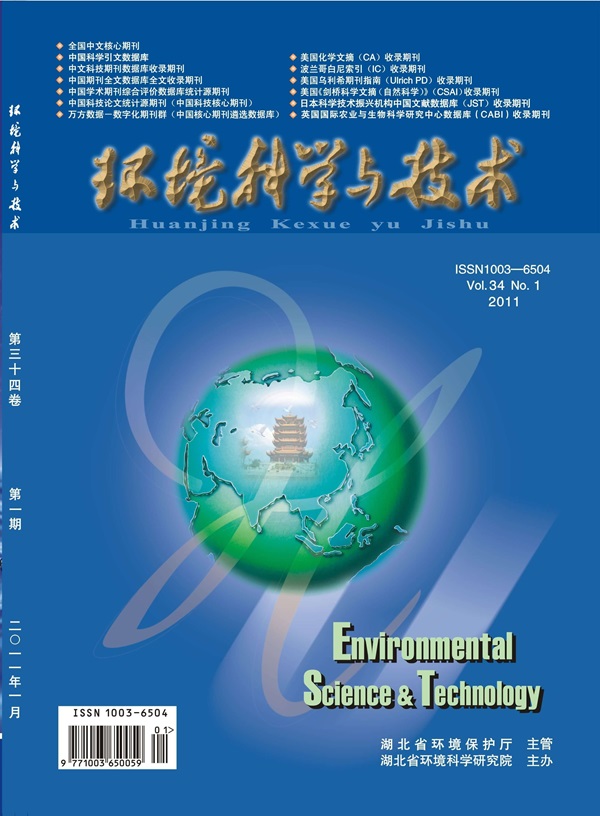Ozone-Resistant Bacteria, an Inconvenient Hazard in Water Reclamation: Resistance Mechanism, Propagating Capacity, and Potential Risks
IF 10.8
1区 环境科学与生态学
Q1 ENGINEERING, ENVIRONMENTAL
引用次数: 0
Abstract
Resistant bacteria have always been of research interest worldwide. In the urban water system, the increased disinfectant usage gives more chances for undesirable disinfection-resistant bacteria. As the strongest oxidative disinfectant in large-scale water treatment, ozone might select ozone-resistant bacteria (ORB), which, however, have rarely been reported and are inexplicit for their resistant mechanisms and physiological characteristics. In this study, six strains of ORB were screened from a water reclamation plant in Beijing. Three of them (O7, CR19, and O4) were more resistant to ozone than all previously reported ORB or even spores. The ozone consumption capacity of extracellular polymeric substances and cell walls was proved to be the main sources of bacterial ozone resistance, rather than intracellular antioxidant enzymes. The transcriptome results elucidated that strong ORB possessed a combined antioxidant mechanism consisting of the enhanced transcription of protein synthesis, protein export, and polysaccharide export genes (LptF, LptB, NodJ, LivK, LviG, MetQ, MetN, and GltU). This study confirmed the existence of ORB in urban water systems and brought doubts to the idea of a traditional control strategy against chlorine-resistant bacteria. A salient “trade-off” effect between the ozone resistance and propagation ability indicated the weakness and potential control approaches of ORB.

耐臭氧细菌--水回收利用中的隐患:抗性机理、传播能力和潜在风险
抗药性细菌一直是全世界研究的热点。在城市供水系统中,随着消毒剂用量的增加,产生耐消毒细菌的机会也随之增加。臭氧作为大规模水处理中最强的氧化消毒剂,可能会筛选出臭氧耐药菌(ORB),但这些细菌的耐药机制和生理特点鲜有报道,也不明确。本研究从北京的一家再生水厂筛选了六株 ORB。其中三株(O7、CR19 和 O4)对臭氧的抗性高于之前报道的所有 ORB 甚至孢子。细胞外高分子物质和细胞壁的臭氧消耗能力被证明是细菌耐臭氧性的主要来源,而不是细胞内抗氧化酶。转录组结果表明,强 ORB 具有联合抗氧化机制,包括蛋白质合成、蛋白质输出和多糖输出基因(LptF、LptB、NodJ、LivK、LviG、MetQ、MetN 和 GltU)的转录增强。这项研究证实了 ORB 在城市供水系统中的存在,并对针对耐氯细菌的传统控制策略提出了质疑。臭氧抗性和繁殖能力之间的显著 "权衡 "效应表明了 ORB 的弱点和潜在的控制方法。
本文章由计算机程序翻译,如有差异,请以英文原文为准。
求助全文
约1分钟内获得全文
求助全文
来源期刊

环境科学与技术
环境科学-工程:环境
CiteScore
17.50
自引率
9.60%
发文量
12359
审稿时长
2.8 months
期刊介绍:
Environmental Science & Technology (ES&T) is a co-sponsored academic and technical magazine by the Hubei Provincial Environmental Protection Bureau and the Hubei Provincial Academy of Environmental Sciences.
Environmental Science & Technology (ES&T) holds the status of Chinese core journals, scientific papers source journals of China, Chinese Science Citation Database source journals, and Chinese Academic Journal Comprehensive Evaluation Database source journals. This publication focuses on the academic field of environmental protection, featuring articles related to environmental protection and technical advancements.
 求助内容:
求助内容: 应助结果提醒方式:
应助结果提醒方式:


